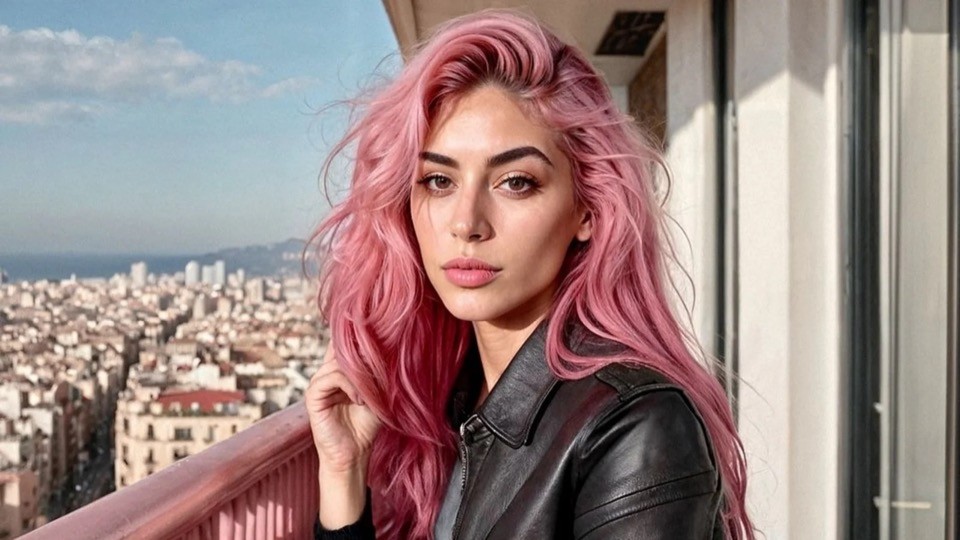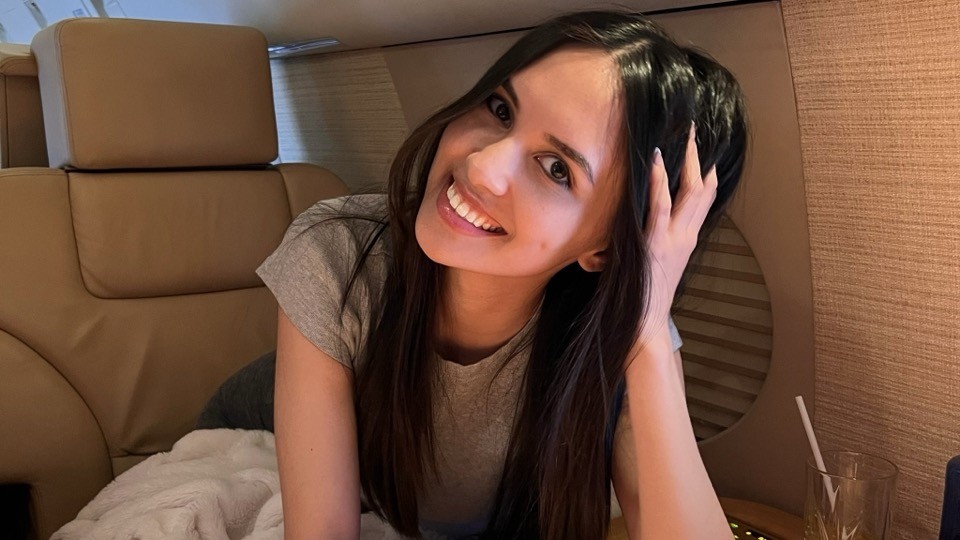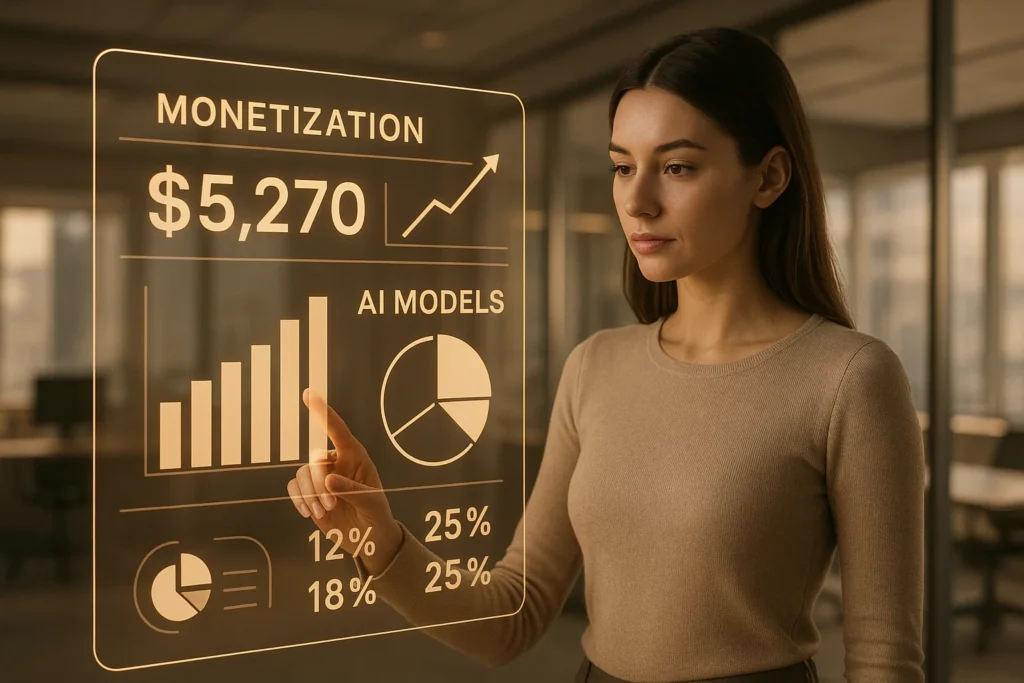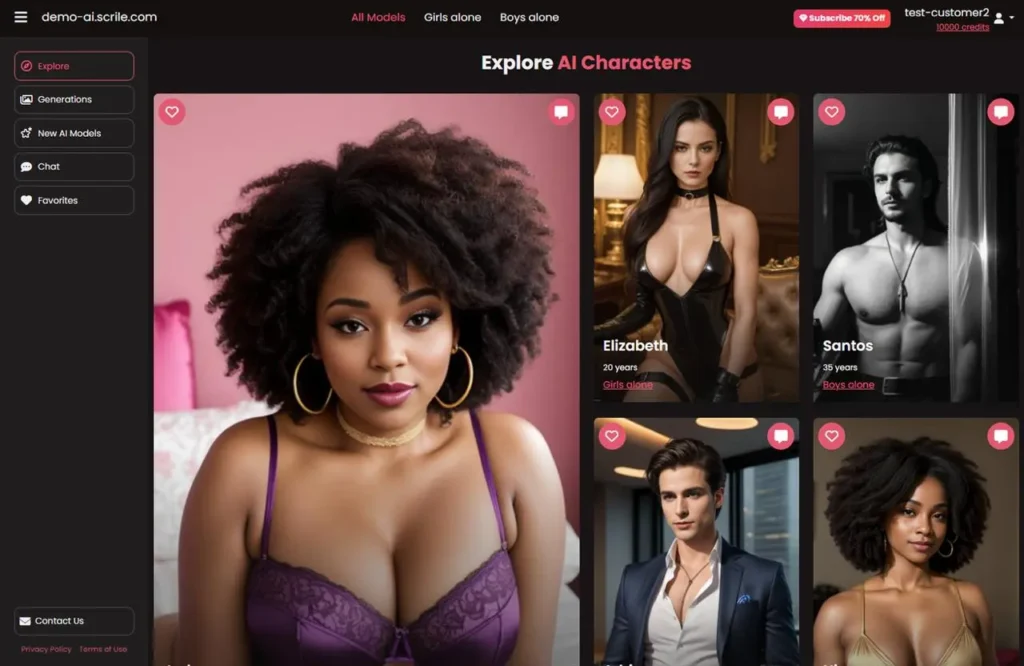How to Create an AI Model Girl in 2025: Tools, Tech & Business Guide
Discover how to create an AI model girl in 2025 — from image generation and personality design to monetization. Learn the tools, technologies, and business models behind the new wave of AI influencers.

How to Create an AI Model Girl in 2025
Intro
The rise of AI influencers marks a new era for digital creators and entrepreneurs. What once sounded like science fiction—virtual girls with realistic personalities, looks, and voices—is now a rapidly expanding business.
In 2025, the line between a human influencer and a digital one is almost invisible. Brands collaborate with AI-generated personas like Aitana Lopez, while startups build entire businesses around virtual models that post, chat, and sell content 24/7. These synthetic personalities attract millions of followers and sponsorships without ever taking a photo or logging off.
Creating an AI model girl isn’t just about generating an attractive image. It’s about crafting a believable digital persona that feels alive—someone who can represent a brand, talk to fans, and even generate revenue. Whether you’re a creator planning to launch your AI alter ego or a founder aiming to build an entire AI influencer agency, understanding the technology and strategy behind it is the first step.
This guide explores how to create an AI model girl, the technology that powers her, real-world examples of success, and the business potential behind this trend.
What Is an AI Model Girl?
An AI model girl is an artificially generated persona—designed, trained, and operated using artificial intelligence. She might appear in photos, videos, or live chats and can behave much like a human influencer.
These digital characters are built using advanced text-to-image diffusion models for visuals, large language models (LLMs) for communication, and sometimes voice synthesis for audio. Together, they form what’s now known as “AI influencers” or “virtual humans.”
Unlike traditional 3D avatars, modern AI models are dynamic. They can learn user preferences, remember context, and respond emotionally. Some act as AI companions, chatting in real time; others run entire social media profiles, post sponsored content, and engage with audiences just like human creators.
The key distinction lies in interactivity. A true girl AI doesn’t only exist visually—she interacts. She can express feelings, joke, and build parasocial relationships that feel surprisingly real.
Why AI Influencers Are Booming
The influencer economy has changed dramatically. Real creators face burnout, rising costs, and unpredictable algorithms. Brands crave reliability, and audiences crave novelty. That’s where AI influencers enter the picture.
For businesses, an AI model girl provides full creative control. There are no scheduling conflicts, no PR risks, and no limitations of time or geography. She can appear in ten campaigns at once, speak multiple languages, and embody any aesthetic a brand desires.
For creators, she opens new ways to scale identity. Instead of being bound by their own image, they can design a network of digital alter egos—each serving different audiences or markets. With the right technology, one person can manage an entire portfolio of AI personas.
And for audiences, AI influencers are fascinating because they blur reality. They offer the authenticity of human connection mixed with the fantasy of perfection. These models can express empathy, share stories, and form emotional bonds through sophisticated LLM-driven dialogue systems.
The combination of cost efficiency, creativity, and constant availability explains why AI influencer generators are becoming central tools for both startups and major brands.
Case Studies: From Aitana Lopez to Caryn AI — How Virtual Models Earn Real Money
To understand how to create an AI model girl that stands out, it helps to look at pioneers who’ve already turned this concept into profit.

Aitana Lopez, developed by The Clueless agency in Spain, is one of the first fully AI-generated influencers to go mainstream. With her vibrant pink hair and confident online persona, she quickly gained over 200K followers on Instagram and began landing real brand deals. Her creators report that brands see higher engagement rates compared to traditional influencers—and zero scheduling drama.

Shudu Gram, created by digital artist Cameron-James Wilson, brought AI into the high-fashion world. Known as “the first digital supermodel,” Shudu has appeared in Balmain and Vogue campaigns, showing that AI-generated women can blend seamlessly into luxury advertising. Her lifelike skin texture, lighting, and posing are all results of advanced diffusion-based rendering, not photography.

Then comes Caryn AI, a turning point in the adult creator economy. Modeled after influencer Caryn Marjorie, this AI version allowed fans to chat with her digital self—charging one dollar per minute. Within a week, Caryn AI earned more than $70,000 in subscriptions and private chat payments. It proved that virtual personas could replicate, and even scale, the emotional intimacy once limited to human creators.
Together, these cases illustrate how AI model girls can exist across markets: from fashion to entertainment to adult content. They demonstrate that the question is no longer if AI influencers can succeed—but how you can create an AI model girl that connects with audiences and drives real business results.
The Technology Behind AI Model Creation
At first glance, a girl AI might seem like a beautifully rendered digital face. But under the surface, she’s powered by several layers of advanced machine learning.
The first layer is visual generation, based on diffusion models such as Stable Diffusion, Midjourney, or Runway ML. These systems translate text prompts into photorealistic images. A marketer or creator can describe “a confident brunette in soft lighting wearing streetwear,” and within seconds, the AI produces multiple lifelike options.
The second layer is personality modeling, powered by Large Language Models (LLMs) such as GPT, Claude, or Mistral. This defines how your AI influencer thinks and speaks. Through prompt engineering and personality fine-tuning, she learns tone, humor, empathy, and emotional response—traits that make conversations natural and relatable.
Next comes voice and motion, which transform static images into living personas. Text-to-speech systems (e.g., ElevenLabs, PlayHT) give the model a distinct voice, while motion capture and animation tools (like DeepMotion or Unreal MetaHuman) allow her to blink, gesture, and lip-sync in videos.
All these components merge to create a believable digital human capable of engaging users across media formats. That’s why modern AI influencer generators no longer focus solely on creating visuals—they integrate text, sound, and behavior into one ecosystem.
Step-by-Step Overview: How to Create an AI Model Girl

If you’re wondering how to create an AI model girl, the process begins long before the first image is generated. It starts with defining her identity. Every digital persona needs a consistent story—her background, tone of voice, aesthetic, and purpose.
Once the creative direction is clear, visual generation comes next. Diffusion-based tools or AI photo editors such as MyEdit, Leonardo AI, or Civitai can produce a full portfolio of consistent images. Many creators combine these visuals into Instagram feeds, short videos, or interactive chat profiles.
The next step involves shaping her AI brain. Using LLM platforms, developers create dialogue patterns, memories, and emotional depth. This determines how she talks to users—friendly, flirty, professional, or mysterious. The more natural her language and reactions, the more convincing her personality becomes.
From there, she can be deployed across different channels: as a chatbot on a website, a digital brand ambassador in ads, or even a subscription-based AI companion. The secret lies in aligning visuals, voice, and dialogue so that every interaction feels human-like.
Ultimately, learning how to create an AI model is about balance—between art and engineering, emotion and automation. The result is not just a digital character but a full-fledged influencer capable of building relationships and generating income at scale.
Visual Design — Building a Realistic Digital Girl
Visual consistency is one of the hardest parts of AI modeling. Generative tools often produce slightly different faces with every prompt, so creators spend time curating datasets and refining styles. Professional teams use tools like ComfyUI or RunDiffusion to train custom checkpoints—ensuring that the same AI model girl can appear in hundreds of unique poses while maintaining recognizable features.
Lighting, skin tone, background, and even the emotion in her eyes contribute to believability. Some brands prefer stylized, anime-inspired aesthetics, while others aim for photorealism so strong that followers can’t tell she’s artificial.
The key is visual storytelling. A good AI model doesn’t just look good; she communicates identity. Her color palette, outfits, and expression should match her persona. Whether she’s a calm minimalist or a bold digital diva, these design choices build the emotional bridge that keeps audiences engaged.
When paired with a strong narrative and interaction model, visuals become more than marketing assets—they become the face of an autonomous, AI-driven brand.
Voice and Motion — From Static to Alive
The next leap in realism happens when an AI model girl starts to move and speak. Voice and motion give her presence—turning a still image into a character that can laugh, sigh, or whisper.
Modern text-to-speech engines like ElevenLabs, PlayHT, or Resemble AI create remarkably human voices. They capture accents, rhythm, and emotion, letting each digital persona have her own sound. Combined with motion tools such as DeepMotion, Kinetix, or Unreal MetaHuman, creators can generate full-body movement and facial animation that sync perfectly with speech.
This combination is what makes a digital influencer appear alive. When viewers hear her voice, watch her react, or see her blink during a livestream, they naturally suspend disbelief. That’s why tools that merge voice, video, and chat capabilities are at the heart of modern AI influencer generators—they turn static visuals into living digital humans who can perform, promote, and connect.
Tools and Platforms to Generate AI Influencers
The market now offers dozens of services promising to help you create an AI model girl in just a few clicks. Some focus purely on visuals, others on interactivity or monetization.
Platforms like Creatify.ai and TheInfluencer.ai are leading examples of all-in-one AI influencer generators. They let users design a character, generate images and videos, and even manage simulated social profiles. For casual creators, this is a quick way to experiment with digital modeling.
However, for entrepreneurs aiming to build a full-fledged business—complete with user accounts, subscription payments, and scalable hosting—ready-made platforms like Scrile AI provide a more comprehensive solution. Instead of using a single generator, Scrile AI enables the creation of entire ecosystems where users can build and monetize their own AI girls.
In other words, while basic AI tools create a single influencer, Scrile AI empowers founders to launch an entire AI influencer platform under their own brand.
The Business Angle — Why Companies Invest in AI Model Girls
Behind every viral AI influencer lies a strong business case. Virtual models don’t need managers, contracts, or vacations. They can post daily, interact with fans continuously, and represent multiple brands without conflict.
For companies, this means reduced marketing costs and complete creative freedom. Campaigns can be localized instantly—your AI model can speak English in the morning and Japanese by afternoon. For digital creators, it’s the ability to scale themselves: one person can manage a dozen personalities and reach multiple demographics simultaneously.
In the broader creator economy, AI influencers represent the next evolution of digital entrepreneurship. Learn more in our 2025 Creator Economy Breakdown.
Some startups even sell access to their AI model girls as a service, charging brands or fans for custom interactions. From subscription fan chats to branded video content, the business models are endless. And because these personas are digital, they can evolve, rebrand, or multiply without limit.
This is why investors and marketing agencies now treat AI influencers as long-term digital assets—each with measurable engagement, lifetime value, and monetization potential.
Monetization Models for AI Influencers

Whether lifestyle, fashion, or adult-oriented, AI influencers follow similar revenue strategies to human creators—but at scale.
The most common models include:
- Sponsorships and brand collaborations — AI models can represent products, run ad campaigns, and generate custom visuals for marketing.
- Subscriptions and pay-per-chat — popular on platforms like Fanvue and Candy AI, users pay for private access or conversations.
- Digital content sales — from custom videos to NFTs and photo sets, AI-generated media can be sold repeatedly.
- Affiliate and promotional campaigns — digital influencers can link products and drive measurable conversions.
These models work because AI influencers operate 24/7 and cost a fraction of real creators. Using a solution like Scrile AI, founders can integrate all of these monetization tools into one white-label platform—ready for real customers and revenue.
If you’re interested in building an AI girlfriend business or subscription-based model, check out our Candy AI Clone guide.
How Much Does It Cost to Create an AI Model Girl?
The cost of building an AI model girl depends on your goals. A hobbyist can use free diffusion tools and online editors to create a visual persona for under $100. But when you add realistic voice, custom datasets, and interactive chat capabilities, the investment increases.
Developing a commercial-grade AI influencer with full interactivity typically costs between $10,000 and $20,000, especially if you need custom design, hosting, and payment integration.
That’s why many startups turn to ready-made AI influencer generators or white-label platforms like Scrile AI—to avoid building from scratch. With Scrile AI, businesses get the full infrastructure: visual generation, chat and voice interaction, monetization tools, and admin dashboards—all hosted and customizable under their own brand.
The Future of AI Influencers in 2025 and Beyond
In 2025, AI influencers are moving from novelty to necessity. The next generation of AI model girls will go beyond scripted content—posting autonomously, responding emotionally, and even collaborating with real creators in mixed reality.
We’re entering an era of autonomous influencer ecosystems, where entire digital teams may be powered by artificial personalities. These AI models won’t just simulate humans—they’ll represent brands, manage communities, and operate as standalone online businesses.
At the same time, the industry faces ethical questions. Should followers know when a persona is synthetic? How should brands disclose partnerships with AI-generated influencers? As realism improves, transparency becomes a key part of maintaining audience trust.
Yet one thing is clear: the demand for authentic, scalable, and always-on digital communication will keep growing—and AI models are perfectly built to meet it.
From Creator to Founder — Launch Your Own AI Model Platform

The biggest opportunity in 2025 isn’t just creating one digital girl—it’s launching an entire AI influencer platform.
With Scrile AI, you can do exactly that. It’s a ready-made SaaS solution that allows you to host, customize, and monetize your own AI model business. Whether you’re building a community of virtual influencers, a subscription-based companion service, or a branded AI entertainment app, Scrile AI provides the full tech foundation:
- Multimodal AI (chat, voice, image generation)
- Built-in monetization (subscriptions, PPV, tipping, digital goods)
- User and admin dashboards
- Secure hosting and GDPR compliance
- White-label branding under your domain
Instead of piecing together multiple tools, Scrile AI lets you go to market instantly—with your own platform, audience, and business model.
💡 Launch your AI influencer platform today — visit Scrile AI to request a free consultation and see the demo in action.
FAQ
How to create a female model using AI?
Creating an AI-generated woman is simple with modern tools. Apps like MyEdit or full-scale platforms like Scrile AI let you describe your desired look, choose a style, and generate realistic images. Advanced setups add chat and voice layers for interactivity.
Can I create my own AI girl?
Yes. AI girl generators allow anyone to build digital personas for videos, social media, or chat experiences. You can use pre-trained models or fine-tune your own to match a specific aesthetic and tone.
How do they make AI girls?
Developers combine image diffusion models, large language models, and text-to-speech technology. Together, they create lifelike visuals, personality, and conversation ability—turning static images into interactive virtual humans.
Final Thoughts
AI model girls are no longer futuristic concepts—they’re a new form of creative entrepreneurship. Whether in fashion, entertainment, or adult content, these digital personas represent the convergence of art, technology, and marketing.
For creators, they’re a way to scale identity. For startups, they’re a revenue engine. And for users, they’re a new way to connect.
If you’re ready to move from inspiration to action, the tools already exist. Scrile AI empowers you to launch your own AI influencer or companion platform—customized, monetized, and fully under your control.
👉 Turn your idea into a living digital brand. Visit Scrile AI and request your free consultation today.
Read also
| Article | Why it’s worth reading |
|---|---|
| AI Instagram Models Explained: How to Build & Monetize Yours | Once you understand the basics, this article shows how to position your AI character specifically for Instagram, build a content plan, and turn followers into paying fans. |
| Top-7 Ultimate AI Waifu Chatbots 2025 – Scrile | If you’re in NSFW or romantic niches, this overview helps you see what users expect from AI waifu chatbots and which features are becoming the new “must-have” standard. |
| Voice Chat for AI Companions in 2025 | Scrile AI | After visuals and text, voice is the next step. This article explains how voice chat boosts engagement and ARPU, and which use cases you should plan for from day one. |
| AI Tools for Webcam Sites: How AI Is Transforming the Adult Industry | If your niche overlaps with webcam or live streaming, this piece shows how AI characters and tools can support human models, automate routine tasks, and keep the site active 24/7. |
This article is handy to me, and I benefited a lot from it.Here is a great AI chat that may be useful to you.